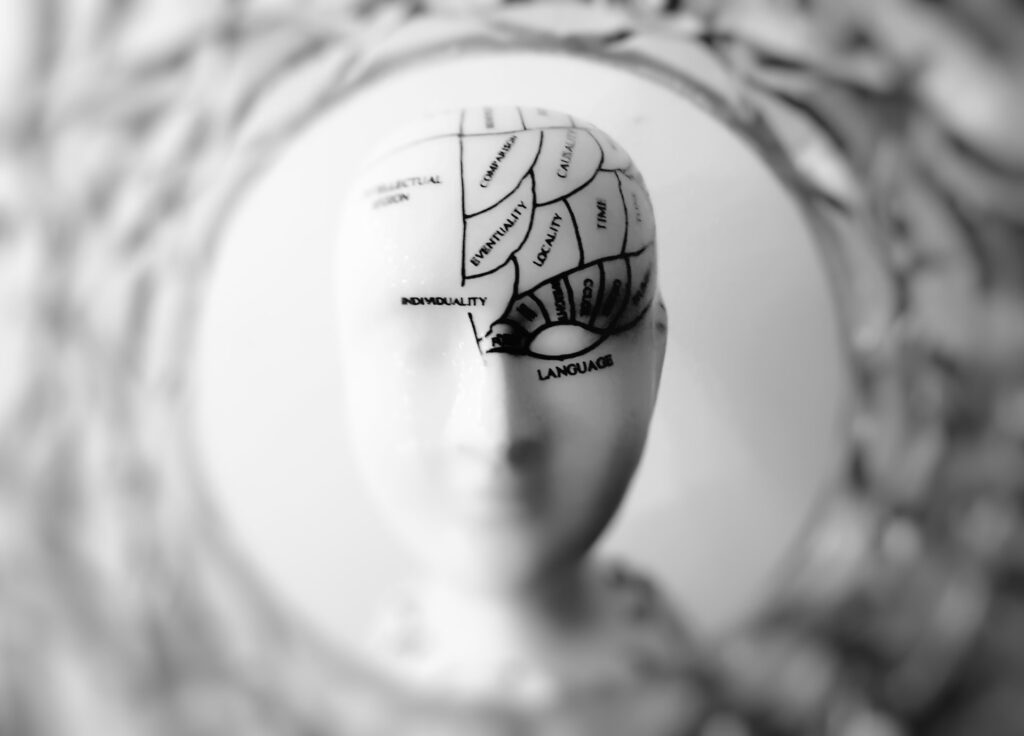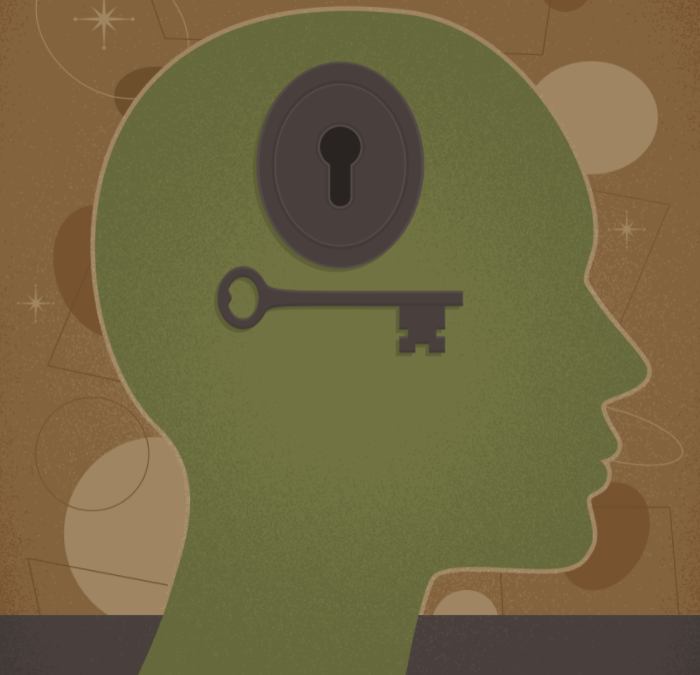I want to tell you about the Theory of Mind—the foundation of how the mind works, how we process information, as well as how and why hypnosis works.
I will simplify my explanation because it can be difficult to process. By the end, you may even transcend into a state of hypnosis. You will understand why I say this as you read on.
First we must ask the question: How does cognition take place? In other words, how do we learn? Each of us learns by identification and association. As a result,our minds create a response to that.
So how does this apply to life?
Let’s say you hear a song – you begin to identify this song with an experience you had. You now have an association with that song (it reminds you of something positive or negative). Your brain then creates a response to that experience.

Different brain regions create different responses, whether it be joy, sadness, anger, etc. These responses become automatic, based on your subconscious programming.
When we are born, there is a part of the mind that is already wired and functioning, which we call the “primitive area”. In this area, there are ultimately 3 responses we are able to experience. These responses, which you may have heard of before, are fight, flight and freeze. In other words, they are our basic survival mechanisms and psychological reactions to distress and potentially harmful situations.
As we grow, we have experiences which create responses: Positive, negative and neutral.
Different people with the same stimulus will react differently based on what they have learned.
We call these ‘knowns’. These are subconscious in nature at first, and then later become automatic responses. The subconscious is about 88% of the mind.

When we reach about 8 or 9 years old, we develop a critical mind which is part conscious and subconscious. This acts as a filter of sorts.
We begin to analyze information with logic, reason, decision, and willpower. This part of the mind is like our protection from danger. Through brain development and experience, we begin to analyze and determine what makes sense for us. This is the 12% of the mind- specifically called the conscious mind.
When there is a conflict within these areas, people can sometimes be brought to the point of seeking help through hypnosis; when the conscious mind wants to change but the subconscious likes everything status quo.
People tend to think that if they consciously want to change a habit or behavior, they should be able to with ease. However, this can lead to them feeling weak or beating themselves up because they can’t stick with that desire. It then becomes a cycle of sabotage.
Now, how does this relate to hypnosis?
The same way – by identification and association. My job as a hypnotherapist is to change those relationships and associations.
In hypnosis, I will use relaxation techniques to help you reach a state of trance. In this state, your mind is more open to suggestions because you are in a heightened state of awareness.
I will then give you suggestions that are in line with what you want to achieve. These suggestions become stored in your subconscious mind, as programming.
Now whenever you face a situation that is related to the suggestion, your brain will automatically respond based on the new programming.

Hypnotherapy: How does hypnosis work on the brain?
In our daily lives there’s a lot of information that our brains process. Let’s call them “message units”. These message units focus on 4 elements: environment, body, conscious and subconscious thinking
Our minds have a certain capacity, so let’s estimate the limit to be around 100 message units. At some point, we become overloaded. Imagine a cup of water that is filled to the brim. All it takes is one more drop and it will overflow.
This is what we call “sensory overload”. Have you ever said or thought to yourself, “My senses are overloaded.”? At this point, you are highly hypnotizable. In other words, you are going into a state of hypnosis.
When this overload occurs, our critical filter begins to break down and we just can’t process anymore.
In this state, the filter is no longer performing its duties and as a result it becomes open and receptive to suggestions. We are less inhibited when our filter is open. The message units lead to the breakdown of the critical filter and it creates the fight flight response; we become what is called ‘hyper suggestible’. When I make suggestions while you are in this state of consciousness, changes can take place in your subconscious.

Relaxation techniques are a necessary part of hypnosis in order to achieve the desired state of relaxation. Relaxation techniques can be used on their own or as part of hypnotherapy. Many different types of relaxation techniques can be used to induce hypnosis. As a certified hypnotherapist, the most important thing is to find a method that works for you. Some people prefer to use self-hypnosis, while others may find it more effective to have a guided hypnosis session with a certified hypnotherapist. Hypnotic induction can also be achieved through meditation, guided imagery, and repetitive verbal cues. Sometimes even just a good book will work.
Data & Studies: Is hypnosis real and how does it work?
While hypnosis is often associated with stage shows and popular culture, it has also been the subject of scientific research. Researchers have shown that hypnosis can be used to treat conditions such as pain, anxiety, and addiction.
So does hypnosis work? The answer is yes. And while some people are more susceptible to hypnotic suggestions than others, almost anyone can benefit from hypnosis if they are willing to participate in the process.
Scientists are still trying to understand exactly how hypnosis works. It is known that during hypnosis, there is increased activity in certain areas of the brain and changes in brainwave patterns. This suggests that hypnotic suggestion can access unconscious thoughts and memories, which may be why it can be effective in treating conditions such as pain and anxiety.
It is also thought that hypnosis may work by altering the way that information is processed in the brain. This theory is supported by research showing that hypnosis can change the way people perceive pain and memories.
So, while we may not yet understand exactly how hypnosis works, evidence suggests that it can be a helpful treatment for some conditions.
So, how does hypnotism actually work?
Similar to cognitive behavioral therapy, hypnosis allows you to face problems head on. Being in a trance-like state of deep relaxation allows for your subconscious mind to come to terms with issues in your life. Which can ease the severity of conscious stress and overload. It is one of the most effective forms of therapy in this regard.
However, hypnosis is not a magic wand. The hypnotic state is a natural state of mind that we all experience every day. Hypnotherapy works by tapping into the unconscious mind to help make changes at a deeper level. Hypnosis can help you change your behavior, and manage your emotions.

Can a person be hypnotized to do anything?
Under the effects of hypnosis, I can never make you do anything you consciously wouldn’t do. Your conscious mind has to be in agreement with my suggestion. Therefore, the chances of unwanted behaviour side effects or false memories after you undergo hypnosis therapy, are non-existent.
The use of hypnosis therapy can help you improve many areas of your life. The process that was just described, can ultimately help overcome asleep problems like insomnia, headaches, phobias, deal with grief, and fear of surgical procedures. It can also help with mental health conditions such as PTSD. Hypnotherapy can also help alleviate Irritable Bowel Syndrome (IBS), and achieve weight loss goals. Hypnotherapy is also widely used for chronic pain, pain control stemming from other medical conditions such as fibromyalgia, and for those who need help with smoking cessation.
So this is how and why hypnosis works. Can be a lot to take in, but please reach out to me if you want to discuss more or if you want to make some positive changes in your life!

